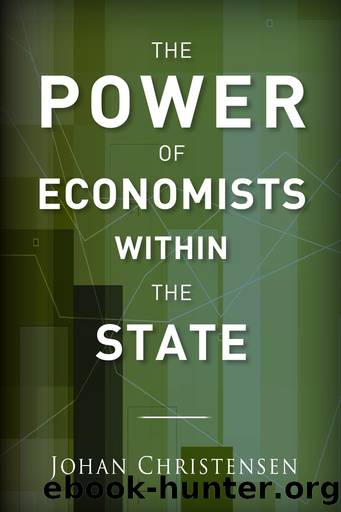The Power of Economists within the State by Johan Christensen

Author:Johan Christensen [Christensen, Johan]
Language: eng
Format: epub
Tags: Social Science, Sociology, General
ISBN: 9781503601857
Google: vUUkDwAAQBAJ
Publisher: Stanford University Press
Published: 2017-04-11T05:26:57+00:00
Chapter 5
Norway
Economic Experts in the Social-Democratic State
I pushed for the introduction of modern economic thinking in the ministry. Not everything could be solved with demand, as the Oslo School economists thought. It was necessary to deal with the structural problems of the economy. All the markets needed to be changed: product markets, the labor market, financial markets. It was necessary to make the markets work, to decentralize decisions to the market; the planned economy was no longer an option. All this was mainstream neoclassical economics; it was Solow, Arrow, Stiglitz, Shultz on the labor market, Romer. It wasnât shocking for regular economists, but it was new to the older generation of economists and to politicians.
âFormer official, Norwegian Ministry of Finance, interview, January 2011
CONVENTIONAL notions of what tax policy looks like in a social-democratic country were put to a severe test by the Norwegian tax reform of 1992. In a blockbuster deal, the Labour government and the conservative opposition agreed on a tax overhaul that put an end to the postwar social-democratic regime of high rates on high incomes and deep deductions for priority investments. The reform not only drastically reduced the top statutory tax rate on labor income but also introduced a flat tax on capital income at a rate far below the rates on labor, thereby explicitly privileging the return on capital over income from âhonest work.â In fact, the reform left Norway with the lowest statutory tax rate on dividends in the OECD (van den Noord 2000: 15). To be sure, this market-conforming tax reform was neither fully comprehensive nor perfectly durable: Areas such as the taxation of housing were not touched by the reform, and certain reform measures were reversed over the following decade. But a new reform in 2006 reaffirmed the commitment of policy makers to low rates and broad bases. Though less extreme than in New Zealand, the changes in Norwegian tax policy from 1990 onwards adhered closely to the principles of efficiency and neutrality in taxation. âIn few countries,â observed one tax expert, âhave modern income tax reforms been governed by overall economic principles to the same extent as in Norwayâ (Christiansen 2004: 9; see also van den Noord 2000; Sørensen 2005).
Why did a social-democratic country like Norway adopt this kind of market-conforming tax policies? Many would instinctively attribute the lowering of tax rates in Norway to the abundance of oil revenues. The extraction of petroleum and natural gas in the North Sea has since the 1980s generated enormous incomes for the Norwegian state, some of which are used over the budget every year. As a result, Norway needs to raise less revenue through the tax system than countries with similar spending levels, such as Denmark or Sweden. Other things being equal, we would expect this to increase the political pressure for lowering tax rates while making it more difficult to broaden tax bases. To some extent these predictions fit the empirical picture: Norway went far in lowering rates on both labor and capital.
Download
This site does not store any files on its server. We only index and link to content provided by other sites. Please contact the content providers to delete copyright contents if any and email us, we'll remove relevant links or contents immediately.
International Integration of the Brazilian Economy by Elias C. Grivoyannis(57393)
The Radium Girls by Kate Moore(10918)
Turbulence by E. J. Noyes(7059)
Nudge - Improving Decisions about Health, Wealth, and Happiness by Thaler Sunstein(6643)
The Black Swan by Nassim Nicholas Taleb(6205)
Pioneering Portfolio Management by David F. Swensen(5616)
Rich Dad Poor Dad by Robert T. Kiyosaki(5167)
Zero to One by Peter Thiel(4835)
Man-made Catastrophes and Risk Information Concealment by Dmitry Chernov & Didier Sornette(4749)
Secrecy World by Jake Bernstein(3789)
Millionaire: The Philanderer, Gambler, and Duelist Who Invented Modern Finance by Janet Gleeson(3576)
Skin in the Game by Nassim Nicholas Taleb(3479)
The Age of Surveillance Capitalism by Shoshana Zuboff(3432)
The Money Culture by Michael Lewis(3292)
Skin in the Game: Hidden Asymmetries in Daily Life by Nassim Nicholas Taleb(3273)
Bullshit Jobs by David Graeber(3190)
The Dhandho Investor by Mohnish Pabrai(3176)
The Wisdom of Finance by Mihir Desai(3087)
Blockchain Basics by Daniel Drescher(2896)
